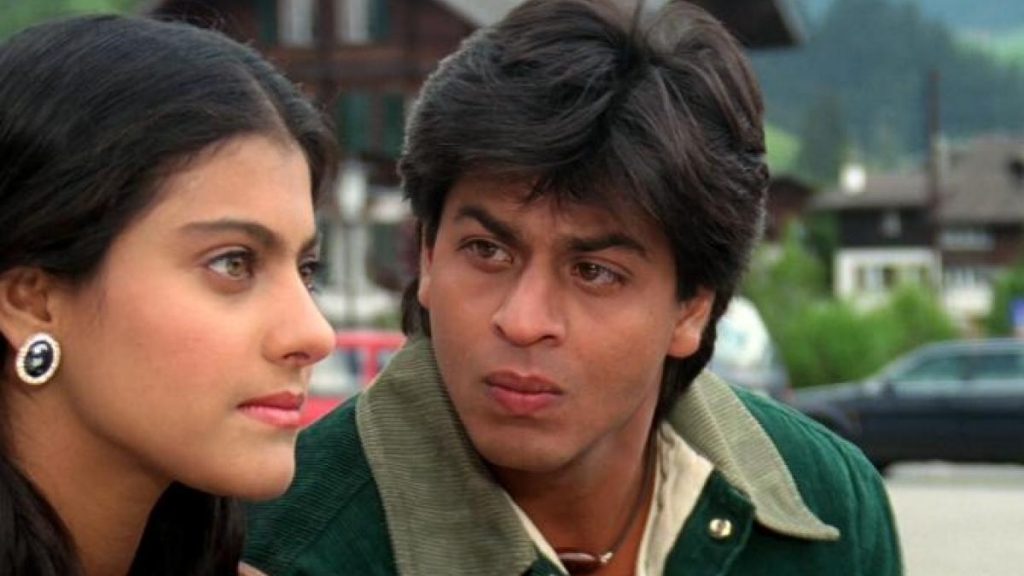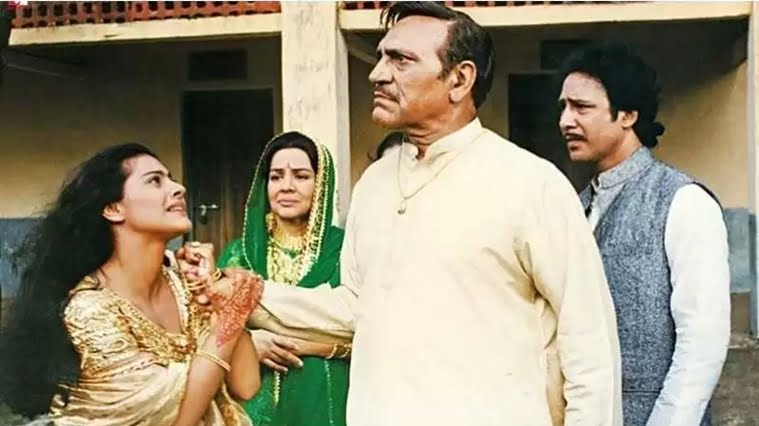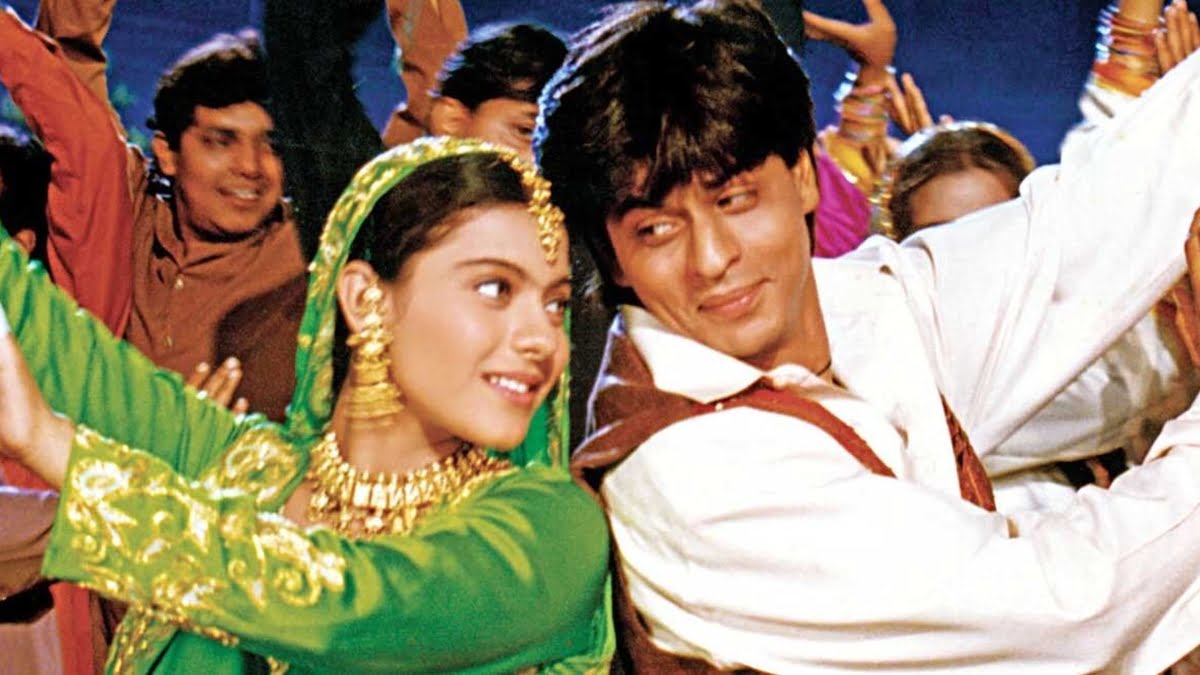Our knowledge of the world develops in a social context and is based on our shared assumptions, according to the social constructionist perspective. Cinema is one such structure that shapes our reality and aids in developing socio-politico-cultural narratives (explains why Shah Rukh Khan epitomised and defined romance for the past decades). The Gender Role Theory is an early form of social constructionism that argues that gender roles and attributes are often formalised by society and are not the objective truth. Therefore, gender roles, like Judith Butler emphasised over and over – is performative in nature, which when habitually performed, influences our shared assumptions and social construction of gender identities. In this essay, this theory will be employed to dissect Dilwale Dulhania Le Jayenge.
Dilwale Dulhania Le Jayenge is a cult classic in Indian cinema, being the longest-running film at the box office, representing romance for much of the 90s and the present. However, its understanding and portrayal of gender roles are stereotypical, whilst also perpetuating and upholding the oppressive structure of patriarchy.
Hindi Cinema has been described as a cultural and ideological force, which shares a reciprocal relationship with society. Feminists view cinema as a cultural practice that largely represents myths about gender. The origins of these patriarchal perceptions of women can be traced back to several factors and eras ranging from Hindu mythology, medieval to colonial and post-colonial India. Although we have begrudgingly made some progress in dismantling these structures, there still lacks an engagement and breakdown of the entrenched misogyny.
Also read: How Women Characters Are Transformed In Bollywood To Deserve ‘Love’
Dilwale Dulhania Le Jayenge is a cult classic in Indian cinema, being the longest-running film at the box office, representing romance for much of the 90s and the present. However, its understanding and portrayal of gender roles are stereotypical, whilst also perpetuating and upholding the oppressive structure of patriarchy.
The story of Dilwale Dulhania Le Jayenge revolves around Raj and Simran, who meet during a trip across Europe and fall in love. However, when Raj learns that Simran is getting married, he follows her to India to win her and her father.

Dilwale Dulhania Le Jayenge begins by displaying starkly contrasting gender roles for men and women. Women work in the kitchen, manage household and children, while always remaining at the beck and call of their husbands. Meanwhile, the men go out to work and are accorded a higher status in the household. Dilwale Dulhania Le Jayenge highlights a very specific set of traits expected out of Indian women, the need to be “sanskari” and “preserve their Indianess” and simultaneously adopting minimal western influences. The film seeks to challenge the dichotomy between the ‘modern, English-speaking, foreign-educated’ Indian and the traditional, close to roots, ‘mere desh ki mitti’ Indian, by concluding that the culture and values of Indians supersede whatever western influences they may acquire. The “Ideal Indian Woman” needs to be traditional, shy, obedient, docile, and self-sacrificing, considering how women are seen as carriers of cultural symbols and upholders of our collective culture. A reel depiction of this sort further sets standards that all women are expected to meet, solidifying the trope that “modernity” and “freedom” corrupt the moral fabric of the country.
To meet this unattainable benchmark, female protagonists in Dilwale Dulhania Le Jayenge take up dual identities within and outside the confines of the house. At home, Simran specifically wore traditional clothes, participated in religious activities, and was an obedient daughter. However, her dressing sense and demeanour was completely different outside her home, shedding light on the plethora of ways women have to give up parts of their identity and conform to the encumbering societal norms. A liberal, assertive woman is seen as a threat and hence, compelled to be meek and acquiescent.

The submissive female protagonists are often passive objects in Dilwale Dulhania Le Jayenge and it is the male characters who determine their fate. Some of the dialogues aptly capture this dynamics of control. Simran seeking to borrow one month from her life to see Europe by pleading to her father, or even the last sequence of the film with the iconic dialogue “Ja Simran, jee le apni zindagi” (Go Simran, live your life), depict the authority men have over women’s lives. Another scene which depicted Raj giving Simran’s hand back to her father saying “Yeh lijiye aapki amanat” (Take your precious belonging) shows how women are treated as objects whose lives revolve around the will of men. Internalisation of this notion was seen in the female protagonists of the film, as they accept the decisions made by the male characters and make peace with them, evident in this dialogue as Simran resigns to a life decided by her father “Shayad Kuljeet hi mera sapna ho” (Maybe Kuljeet is my dream).
In Dilwale Dulhania Le Jayenge, Raj tries inappropriate gimmicks to get close to Simran or seek her attention. Her disinterest isn’t taken as a cue to stop but as a sign to continue it further.
The idea of romance as captured in the non-consensual, untoward advances by men further erodes the agency of women. In Dilwale Dulhania Le Jayenge, Raj tries inappropriate gimmicks to get close to Simran or seek her attention. Her disinterest isn’t taken as a cue to stop but as a sign to continue it further. The man is the domineering one in the relationship who has to “convince” the girl and make her realise that she is also in “love“ with them. And in such a relationship, the “izzat” of the family and community solely rests on the woman’s shoulder. This honour lies in the female protagonist’s sexuality, because an Indian woman needs to protect her modesty at all costs, as Raj puts it “Main jaanta hoon ki ek hindustani ladki ki izzat kya hoti hai” (I know how valuable an Indian woman’s honour is). According to the Dilwale Dulhania Le Jayenge logic (and that of several films and of the society at large, even today) the virginity of a woman is directly proportional to the amount of respect she deserves in society.
A few opening sequences of Dilwale Dulhania Le Jayenge also depicted a contrast between men and women’s perception of romantic relationships. For Simran, who is dancing in the rain, calling for this mysterious knight in shining armour, this romantic relationship has grave significance. Simran calling Raj her life (“Woh meri zindagi hai”), signifies this centrality. However, this differs for the male protagonist. The opening sequence shows snippets from Raj’s life where he is playing, running, having fun, without any longing for “the one“. These scenes juxtaposed their lives, and hinted at the fact that romantic relationships define a woman’s identity while for men, romantic relationships is just another addition to already existing bonds of their lives. This oft-employed trope, while implying that women have their hearts set on frivolous matters such as romance and desires, also show them as seductress’ attempting to win their man over, while the ‘rational’ man gives no attention to her. Further, this also substantiates the prevailing sentiment that women’s existence derives meaning only from the relationships in their life – being a daughter, mother, wife, partner.
Also read: The Evolution Of Bollywood Movie Posters And What They Tell Us…
A shift from these stereotypical roles was seen when the mother recognises these sacrifices women have to make. In Dilwale Dulhania Le Jayenge, the mother didn’t want her daughter to do the same, however, she also did not have much say in front of her husband who dominated the household and was the patriarch. She decided to fight this internalisation and asked Simran to run away. Yet, Raj, the “decision-maker”, refused because he felt that he could not marry Simran without her father’s approval. This falls in line with the overarching theme of Dilwale Dulhania Le Jayenge – women are the property of their family and should be governed by their father’s will. And once when the father agrees that it is now time to let Simran live her life, no surprises for guessing who will have the final say in that. Yes, Raj.
A close look at the gender dynamics has revealed that Dilwale Dulhania Le Jayenge upholds and cements gender binaries and roles which are taken to be natural because of how pervasive they are.
A close look at the gender dynamics has revealed that Dilwale Dulhania Le Jayenge upholds and cements gender binaries and roles which are taken to be natural because of how pervasive they are. A social constructionist, post-structural lens also allows one to deconstruct these meanings and explore the manifestations of an unjust system in popular culture. It is important to question these depictions and consume every art form while being cognizant of the meanings it creates.
Sanjula is a second year student of Psychology at Delhi University. She is passionate about exploring mental health from a political and intersectional lens, film studies and delving into the complex gender dynamics in our country. She believes that social constructionism and the ability to question the ‘objective truth’, empowers one to dismantle oppressive structures. She can be found on Instagram and Twitter.





It always struck me that Simran is much more like her father characterwise than her mother. She is woman with a backbone of steel which I could see as a matriarch ruling her family in the future. Raj is the singing fun guy always coaxing her into doing things. That is a pattern that will develop in the future: She is the decision maker in their relationship while he is the guy coaxing her and other people to get them on his side.